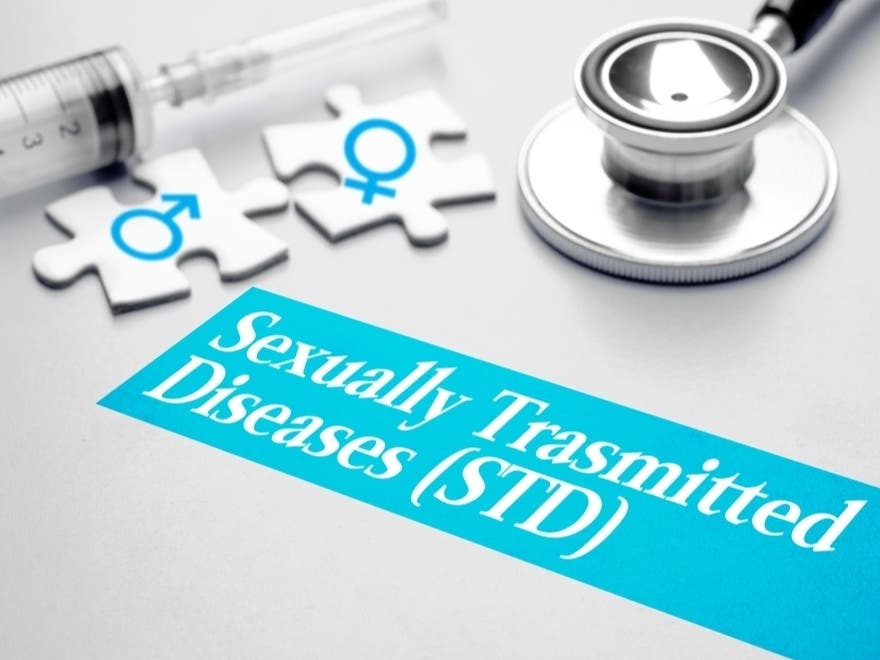Health & Fitness
Rising Syphilis Cases In VA And US Alarm Public Health Officials
Health officials don't know why syphilis cases rose by 9%, while gonorrhea cases were down by the same percentage. See VA numbers for STDs.

VIRGINIA — The United States hasn’t seen such high syphilis rates in more than 70 years, according to a new report that shows Virginia ranks 38th nationwide in transmission of the disease.
In its report Tuesday on sexually transmitted diseases among adults, the Centers for Disease Control and Prevention said the rate of infectious syphilis cases increased 9 percent in 2022. At the same time, cases of gonorrhea were down 9 percent, dropping for the first time in a decade. Gonorrhea rates fell in about 40 states.
Chlamydia rates were largely unchanged.
Find out what's happening in Fredericksburgwith free, real-time updates from Patch.
In Virginia, there were 936 reported cases of primary and secondary syphilis in 2022. The rate per 100,000 population was 10.8.
Here are Virginia’s rankings and case rates for gonorrhea, chlamydia and congenital syphilis for 2022:
Find out what's happening in Fredericksburgwith free, real-time updates from Patch.
- Gonorrhea: Ranks 27th with 154.7 cases per 100,000 people
- Chlamydia: Ranks 28th with 469.7 cases per 100,000 people
- Congenital syphilis: Ranks 43rd with 20.9 cases per 100,000 people
Officials said they aren’t clear why syphilis cases rose by 9 percent while gonorrhea cases were down by the same percentage, but noted it’s too soon to say if a downward trend is emerging for the latter.
The CDC’s primary focus is on syphilis, which is less common than either gonorrhea or chlamydia, but considered more dangerous. Total U.S. cases of syphilis surpassed 207,000 in 2022, the highest count since 1950.
CDC officials said that while syphilis has a disproportionate impact on gay and bisexual men, it is expanding in heterosexual men and women, and increasingly affecting newborns, too.
Syphilis is a bacterial disease that can surface as painful genital sores, but can ultimately lead to paralysis, hearing loss, dementia and even death if untreated.
New syphilis cases began plummeting in the 1940s when antibiotics became available, and fell to their lowest by 1998.
The CDC said about 59,000 of the 2022 cases involved the most infectious forms of syphilis. Of those, about a quarter were women and nearly a quarter were heterosexual men.
Dr. Philip Chan, who teaches at Brown University and is chief medical officer of Open Door Health, a health center for gay, lesbian and transgender patients in Providence, Rhode Island, told The Associated Press that he thinks syphilis is “unknowingly being spread in the cisgender heterosexual population because we really aren’t testing for it.”
“We really aren't looking for it” in that population, he said.
The report showed rates of the most infectious form of syphilis rose across the country, but especially so among American Indian and Alaska Native people.
South Dakota outpaced any other state for the highest rate of infectious syphilis at 84 cases per 100,000 people — more than twice as high as the state with the second-highest rate, New Mexico.
South Dakota's increase was driven by an outbreak in the Native American community, Dr. Meghan O’Connell, chief public health officer at the Great Plains Tribal Leaders’ Health Board based in Rapid City, South Dakota, told AP.
Nearly all the cases were in heterosexual people, and O'Connell said that STD testing and treatment was already limited in isolated tribal communities and only got worse during the pandemic.
Chlamydia cases were relatively flat from 2021 to 2022, staying at a rate of about 495 per 100,000, though there were declines noted in men and especially women in their early 20s. For gonorrhea, the most pronounced decline was seen in women in their early 20s as well.
Experts say they’re not sure why gonorrhea rates declined, but one reason may be the disruption in STD testing during the pandemic.
It’s possible that testing and diagnoses were still shaking out in 2022, said Dr. Jonathan Mermin, director of the CDC’s National Center for HIV, Viral Hepatitis, STD and TB Prevention, told AP.
“We are encouraged by the magnitude of the decline,” Mermin said, though the gonorrhea rate is still higher now than it was pre-pandemic. “We need to examine what happened, and whether it's going to continue to happen.”
The Associated Press contributed reporting.
Get more local news delivered straight to your inbox. Sign up for free Patch newsletters and alerts.